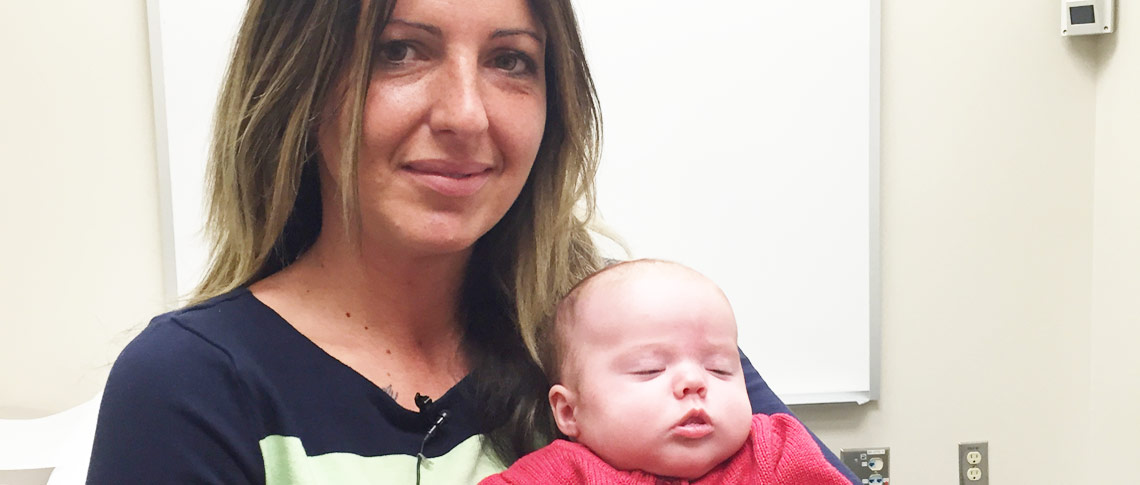
November 2, 2015

INSPIRE (Integrated Neonatal Support with Placental Transfusion and Resuscitation) device helped give preemie Anastasia (pictured inset, with mom Jasmina Stewart), the best possible start in life.
CALGARY – In a North American first, researchers at Foothills Medical Centre have developed a device that allows preterm infants to receive resuscitation and other interventions immediately after birth while remaining connected to their umbilical cord.
INSPIRE (Integrated Neonatal Support with Placental Transfusion and Resuscitation) is a portable resuscitation station and can be placed right beside a delivering mom. Preterm infants can be placed on its stainless steel platform immediately after birth to receive resuscitative care while still connected to the placenta via the umbilical cord.
The standard of care for healthy newborns is to wait at least one minute after birth, when safe to do so, before severing the umbilical cord. Studies show remaining connected to the umbilical cord for one to three minutes after birth reduces the risk of bleeding in the brain by 50 per cent.
However, infants born prematurely – before 32 weeks – often need urgent additional care, which requires immediate clamping of the umbilical cord so they can be transported to a resuscitation station.
“INSPIRE gives preterm infants the best possible start in life,” says Dr. Sumesh Thomas, Medical Director of Neonatology at the Foothills, who developed the device with his colleague, neonatal nurse practitioner Leigh Irvine.
“By staying connected to their cord, these infants receive their blood from the placenta, along with stem cells, which improves transition to life outside their mom along with other lifelong positive outcomes,” adds Dr. Thomas.
The battery-powered device includes a scale, oxygen tanks, resuscitation equipment and blood oxygen monitors, and has been used to help resuscitate and offer delayed cord clamping to at least six preterm infants since it was first used in May.
Jasmina and David Stewart were relieved to be offered the option of delayed umbilical cord clamping, thanks to INSPIRE, when their daughter Anastasia was born at 30 weeks last July.
“There were no risks so we had nothing to lose,” says Jasmina, whose daughter had to spend nearly six weeks in the neonatal intensive care unit (NICU). “For babies, especially premature babies like Anastasia, remaining connected for as long as possible was the best possible option. It’s wonderful that this option was available.”
Dr. Thomas and nurse Irvine have plans for a large-scale study to further evaluate the benefits of the INSPIRE device.
“Developing this device which potentially improves care and outcomes for infants has been a truly collaborative exercise and an inspirational journey,” Dr. Thomas says. “This project would not be possible without neonatology staff and the relentless dedication of the study team, local obstetric and midwifery staff, administrators, engineers and AHS audiovisual experts.”
Alberta Health Services is the provincial health authority responsible for planning and delivering health supports and services for more than four million adults and children living in Alberta. Its mission is to provide a patient-focused, quality health system that is accessible and sustainable for all Albertans.
- 30 -